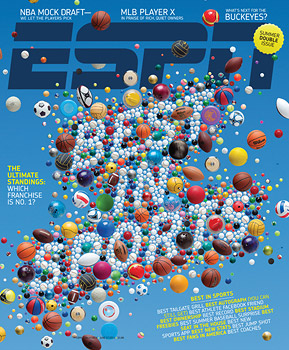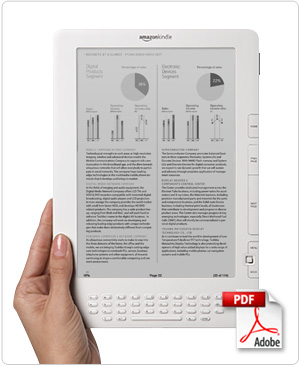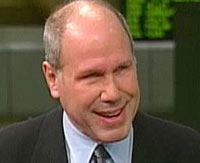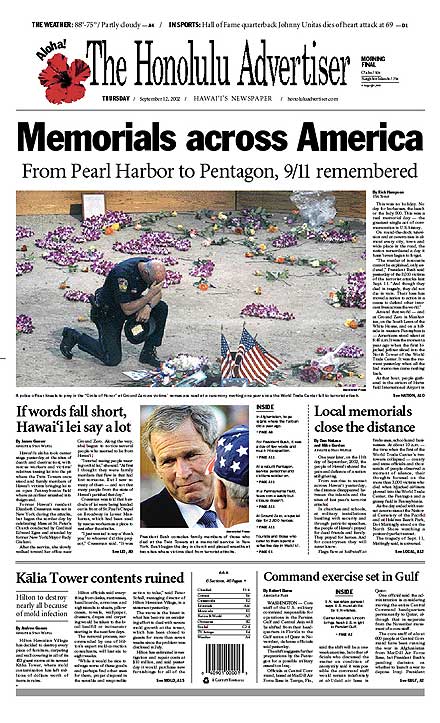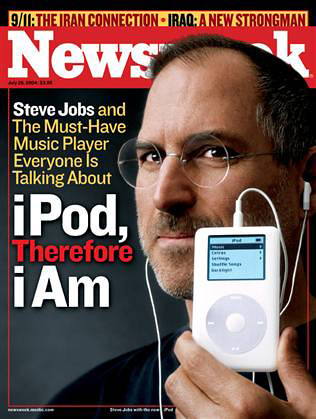USC journalism professor Judy Muller goes back to her roots in small-town weeklies and writes an op-ed for the Los Angeles Times that concludes that “there are thousands of newspapers that are not just surviving but thriving.” Muller points out some of the unique challenges of publishing in a small community, such as having to unmask wrongdoing by the town councilor who may be your brother-in-law. She also made us laugh with this example of a typical item on the local police blotter: “Man calls to report wife went missing 3 months ago.”
It’s a fun and inspiring read, and would be even better if it were true, but Muller makes an essential journalism error in not providing any factual evidence to support her “thriving” claim. In fact, weekly local newspapers have been taking it in the neck for years. We long ago stopped tracking news of local newsweekly closures because the volume was overwhelming. Back in 2009, Journal Register Co. closed scores of weekly holdings in one fell swoop, and Gannett and others have followed. Weeklies were some of the hardest-hit properties in Media News’ recent consolidation. Reports of other weekly shutdowns hit our Google Reader every couple of weeks. We’re frequently asked how many local weeklies have closed but we know of no one – not even the amazing Erica Smith – who keeps count.
Which isn’t to take anything away from the many dedicated journalists who put up with long hours and low wages to publish the thousands of small-town weeklies that still survive. Local publishing has never been a lucrative business to begin with, and the pressure is only getting worse as low-overhead online operations like Patch – not to mention bloggers and independent Web publishers – nibble away at their local advertising base. We admire the dedication of these publishers and are inspired by stories like that of M.E. Sprengelmeyer, a daily journalist who found fulfillment running a 2,000-circulation weekly in Santa Rosa, N.M. after losing his job in the Rocky Mountain News closure in 2009 (see video). Muller celebrates Sprengelmeyer in her op-ed, but also uses a word we hear a lot when discussing this topic: “exhausted.”
Small-town weekly publishing is a lot of things: rewarding, fulfilling, responsible, important and endangered. There’s one thing that it clearly isn’t, though: thriving.
Boston Globe Splits Web Presence
The Boston Globe has come up with a novel twist on the paywall concept: It’s launching a paid portal that “offers an innovative, inviting reading experience that is the only gateway to all of the Globe’s journalism.” BostonGlobe.com is the new online companion to the 139-year-old daily that provides the full contents of the print edition as well as bonus features. It will be free through the end of this month and $3.99/mo. thereafter. Home delivery subscribers get access for free. The website will be formatted for reading on a variety of desktop and mobile devices, although few details were provided.
Boston.com, the regional site that the Globe launched in partnership with several local media outlets in 1995, will remain free. It will focus on daily sports coverage, online features and lifestyle information, and also include five stories from the daily print edition and summaries of other content that can be read in full on BostonGlobe.com.
In positioning the bifurcated strategy, Globe Editor Martin Baron described Boston.com as a site for the common man with BostonGlobe.com as its more erudite sibling. “BostonGlobe.com is essentially purely journalistic, and Boston.com is more of a town square where you get news and information, but you can also buy tickets to events and exchange information and opinions with your neighbors,’’ he said. Boston.com will continue to be advertising-supported.
The Globe was actually an early innovator in hyperlocal journalism. When Boston.com was launched as a partnership between the Globe and several local print and broadcast outlets, it broke the then-emerging newspaper mold by focusing on regional coverage rather than delivering an electronic version of the print product. However, as partners dropped out of the venture over time, Boston.com increasingly became the online face of the Globe, eventually getting to the point that articles about Israel and Japan routinely led the home page. With the new strategy, the Globe appears to be returning Boston.com to its roots.
Miscellany
If you’re still on the fence about buying a tablet computer (we took the plunge last month and are enjoying the experience), you can get one at a really good price if you also buy a subscription to two Philadelphia newspapers and a website. The Philadelphia Media Network, which publishes the Inquirer, the Daily News and Philly.com, has teamed up with three local sponsors and the French electronics company Archos to sell Archos’ Arnova 10 G2 Android tablets preloaded with gobs of Philadelphia news for $285. The advertised price of the tablets themselves is as low as $99, or about half what they cost on eBay. The catch is that you have to buy a subscription to three news apps as part of the deal. We suppose there are enough Philadelphians, who can never get enough Eagles coverage, to sell out the 5,000 units being offered on Phillytablet.com.
